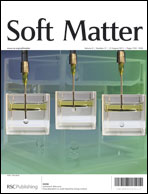By coupling a fluid–structure interaction algorithm with a three-level multiscale structural model, we simulate the tank treading responses of erythrocytes (red blood cells, or RBCs) in shear flows. The focus of this study is on the transient process involving the development of the local area deformation of the protein skeleton due to the slip between the lipid bilayer and the protein skeleton. The fluid motion is depicted within the Stokes-flow framework, and is mathematically formulated with the boundary integral equations. The structural model takes into account the flexible connectivity between the lipid bilayer and the protein skeleton as well as viscoelastic responses. Under the assumption that the natural biconcave configuration of the protein skeleton is its reference state (i.e. the state in which the skeleton has uniform pressure and zero shear stress), we reach the following conclusions: (1) during tank treading motions it takes long relaxation time for significant skeleton area deformations to establish; (2) depending on the initial orientation of the cell with respect to the incoming flow, two responding modes have been identified. One of them is characterized by oscillations in cell geometry (breathing) and orientation (swinging). The other is a steady membrane-circulating motion; (3) the oscillatory motions (breathing and swinging) are closely related to the inequality of the dimples and the rim associated with the shape memory effect. In the first response mode the regions corresponding to the dimples in the original state circulate around the cell, creating unsteadiness in the fluid–structure interaction problem and leading to oscillatory behaviors such as breathing and swinging motions.

You have access to this article
 Please wait while we load your content...
Something went wrong. Try again?
Please wait while we load your content...
Something went wrong. Try again?


 Please wait while we load your content...
Please wait while we load your content...